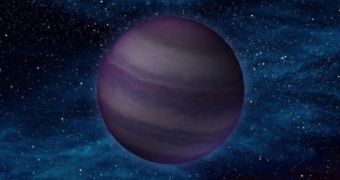Astronomers investigating data collected by an infrared telescope operated by NASA recently discovered the existence of the coolest class of stars in the Universe. These objects appear to have temperature levels comparable to those of the human body.
Data to support this idea were collected by the NASA Wide-field Infrared Survey Explorer (WISE) telescope, which has since completed its science mission, and has been put in stand-by.
There are numerous forms of star-like bodies in the Universe, including brown dwarfs. These objects are very cold when compared to a normal star, with temperatures of only hundreds of degree Celsius.
Some of these bodies are referred to as failed stars, which means that they formed from a hydrogen gas cloud that was not sufficiently massive to allow for them to ignite properly. This failure to achieve sustainable nuclear fusion is what makes them so cold.
In the study, the newly-discovered objects are called Y dwarfs. Astronomers have been looking for these objects for many years, but thus far they've had no success in finding them. Identifying such cold objects in space required an infrared observatory of extreme precision.
This is exactly what WISE was. Using the observatory's four bands of infrared, investigators were able to detect the faint glow of no less than 6 Y dwarfs, all of which were located within 40 light-years away from the Sun. These objects give off an extremely faint glow.
“WISE scanned the entire sky for these and other objects, and was able to spot their feeble light with its highly sensitive infrared vision,” NASA Headquarters Astrophysics Division director Jon Morse says.
“They are 5,000 times brighter at the longer infrared wavelengths WISE observed from space than those observable from the ground”, the official explains. He adds that Y dwarfs are a subclass of the brown dwarf group.
Members of this group cannot fuse hydrogen atoms at their cores, which means that whatever heat they had when they formed through molecular cloud collapse is lost over time. Over millions of years, the only light these objects emit is in infrared wavelengths.
“The brown dwarfs we were turning up before this discovery were more like the temperature of your oven,” WISE science team member Davy Kirkpatrick explains. He is based at the California Institute of Technology (Caltech) Infrared Processing and Analysis Center.
“With the discovery of Y dwarfs, we've moved out of the kitchen and into the cooler parts of the house,” he adds. The expert is also the lead author of an Astrophysical Journal Supplement Series paper, which details the discovery of 100 brown dwarfs by WISE. Six of these objects were Y dwarfs.
The lead author of the paper was WISE team member Michael Cushing, who is based at the NASA Jet Propulsion Laboratory, in Pasadena, California. The JPL manages the WISE mission for the American space agency's Science Mission Directorate, at NASA Headquarters, in Washington, DC.

 14 DAY TRIAL //
14 DAY TRIAL //